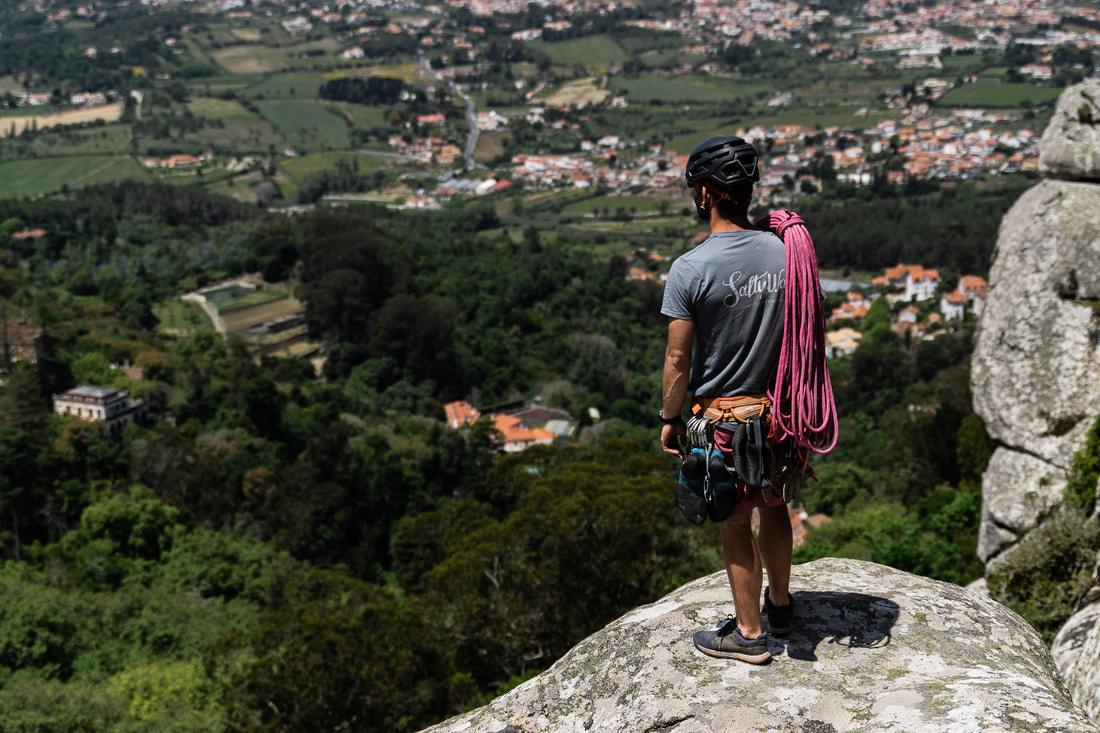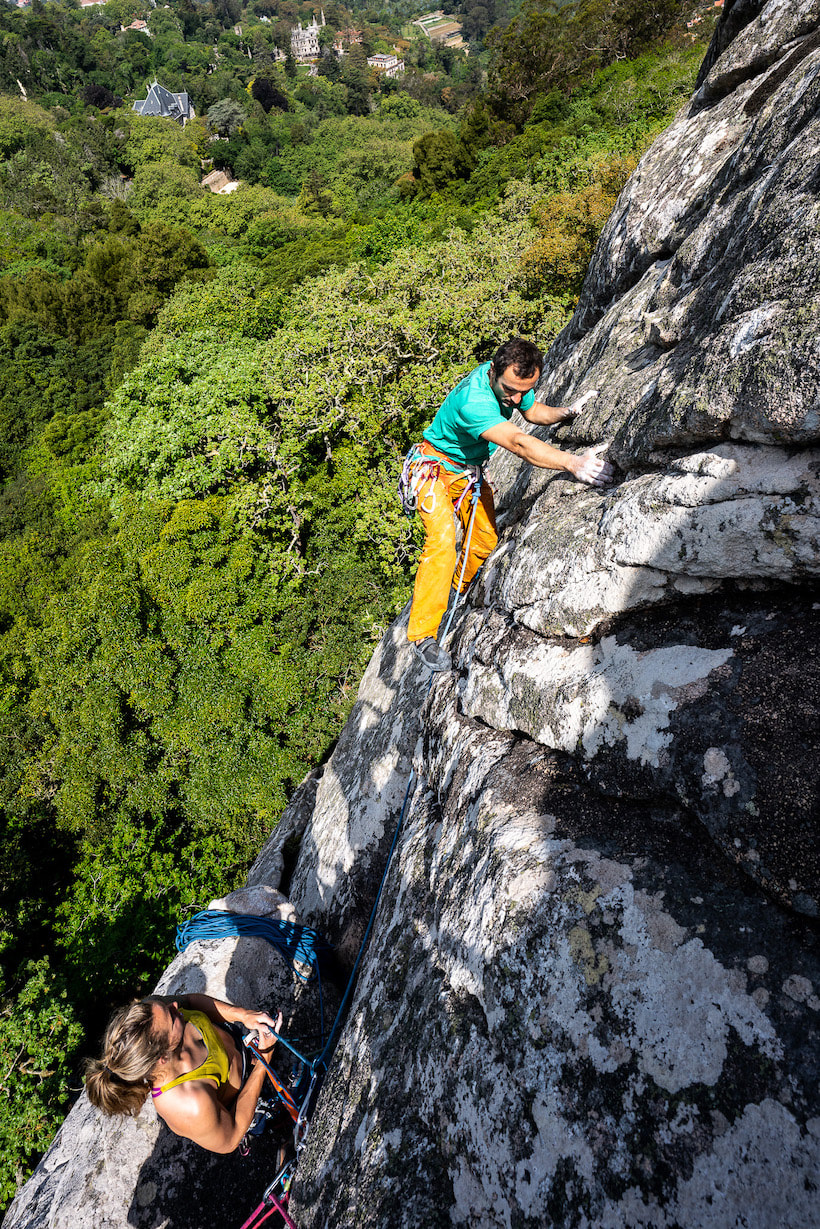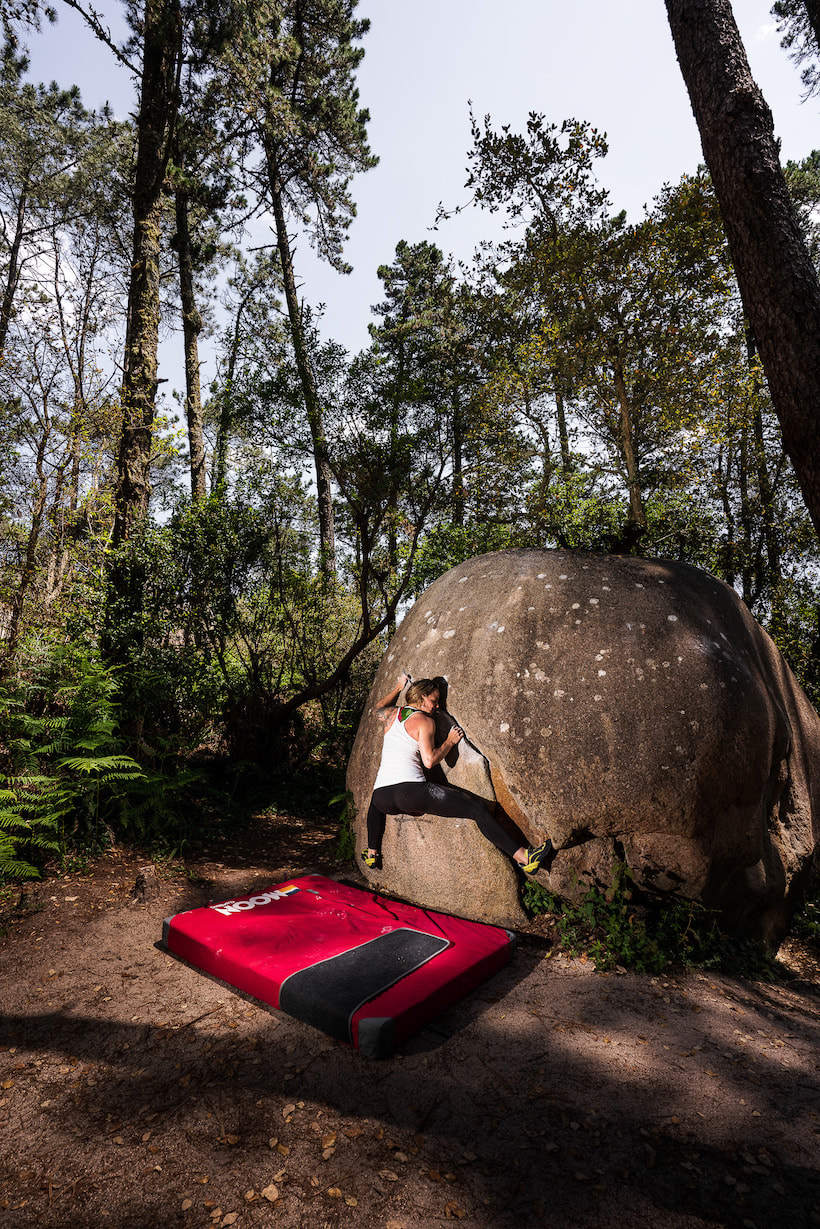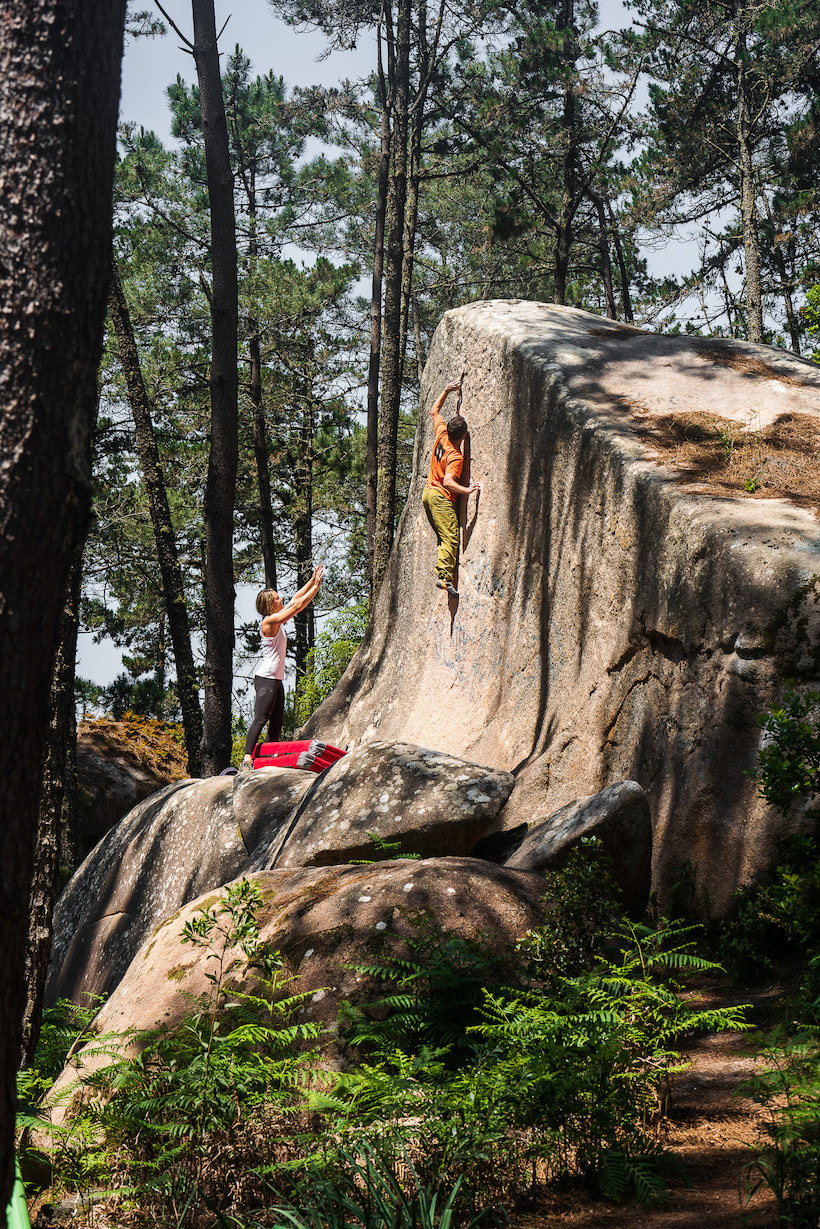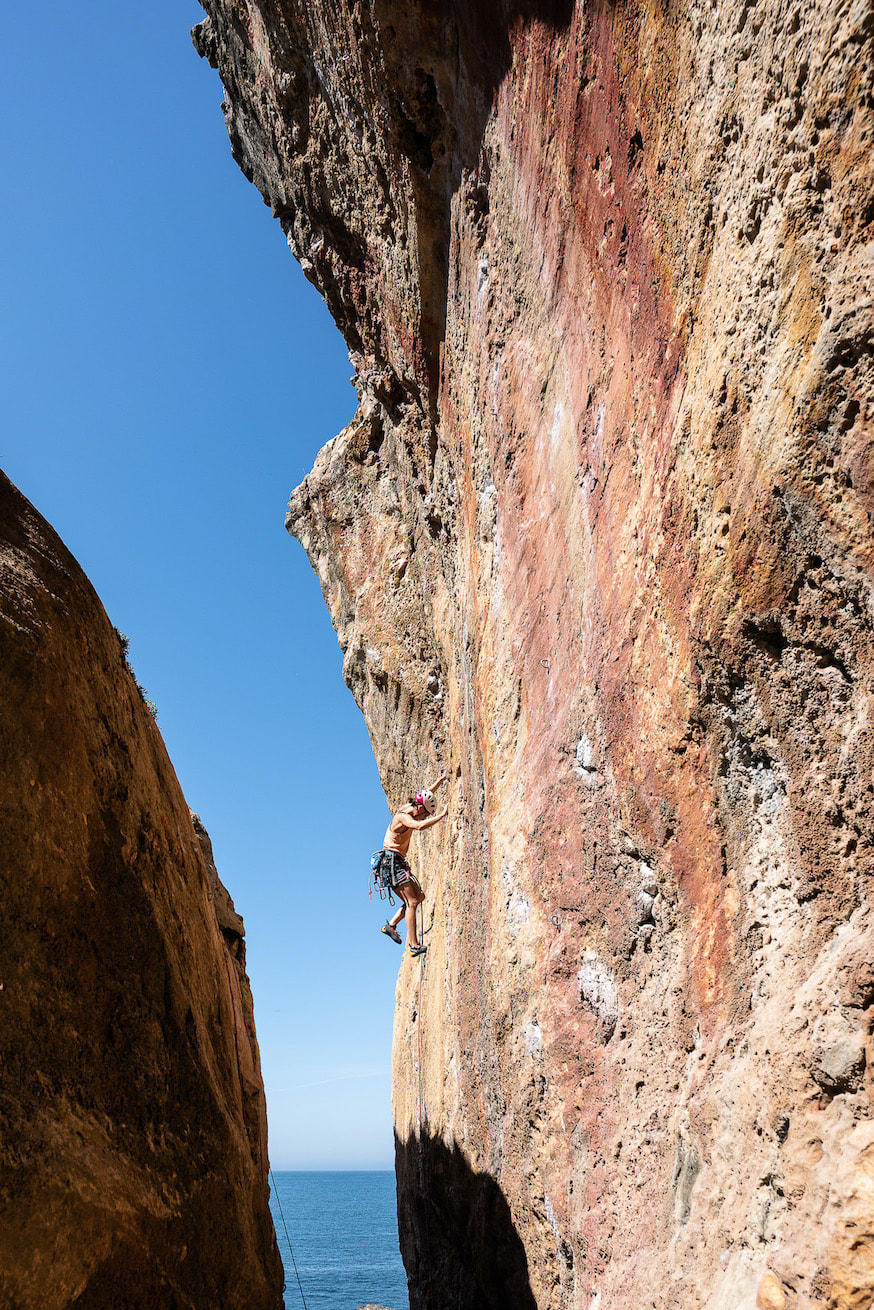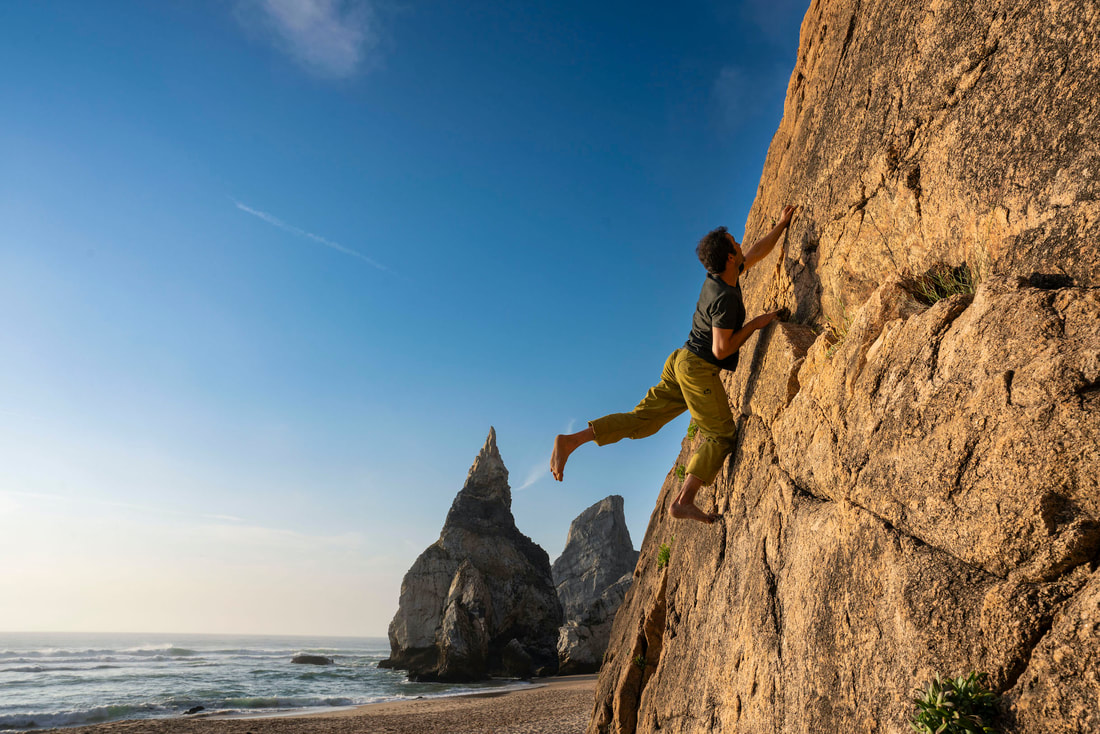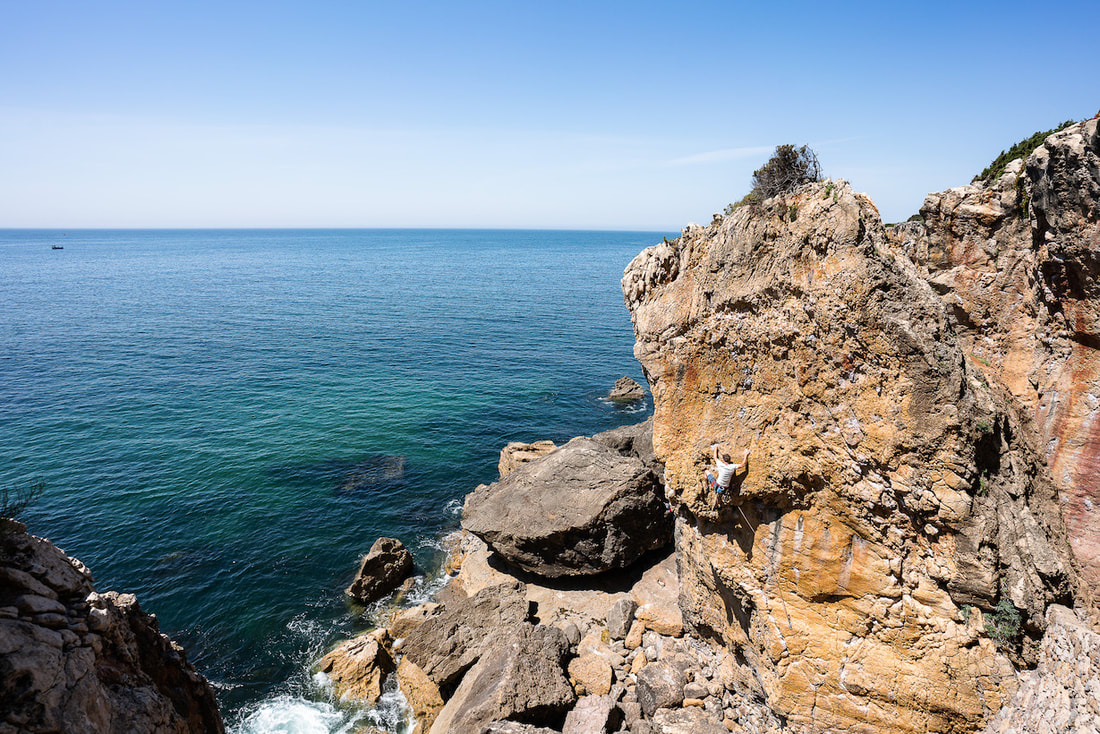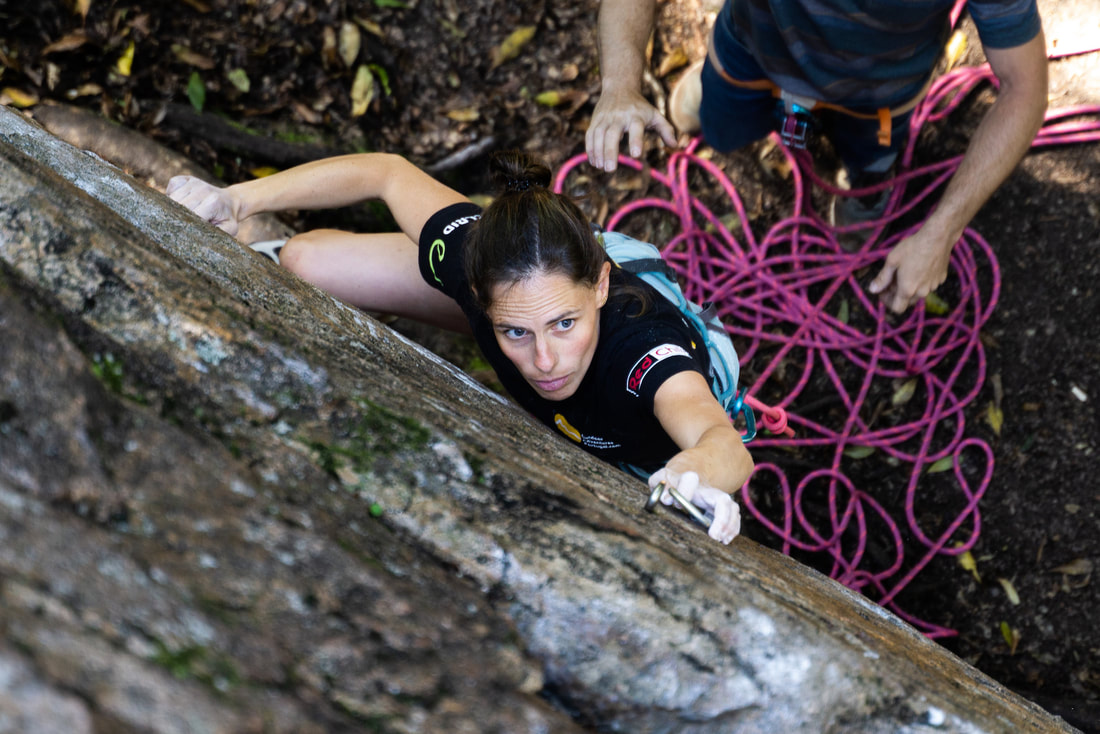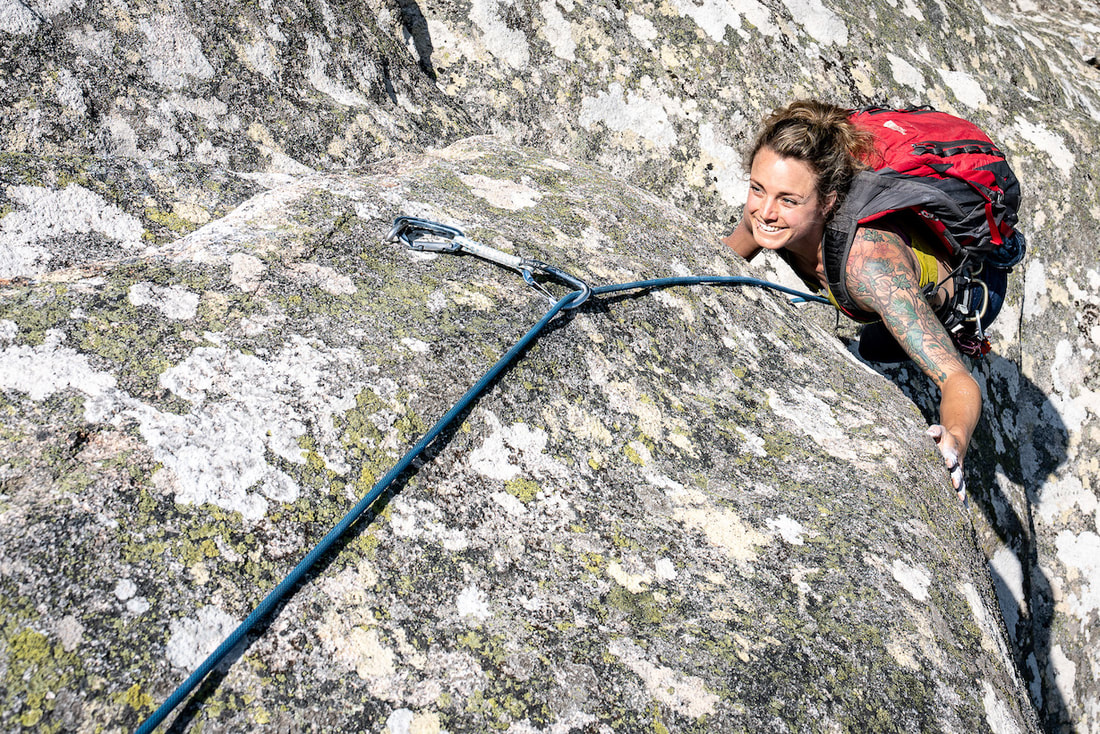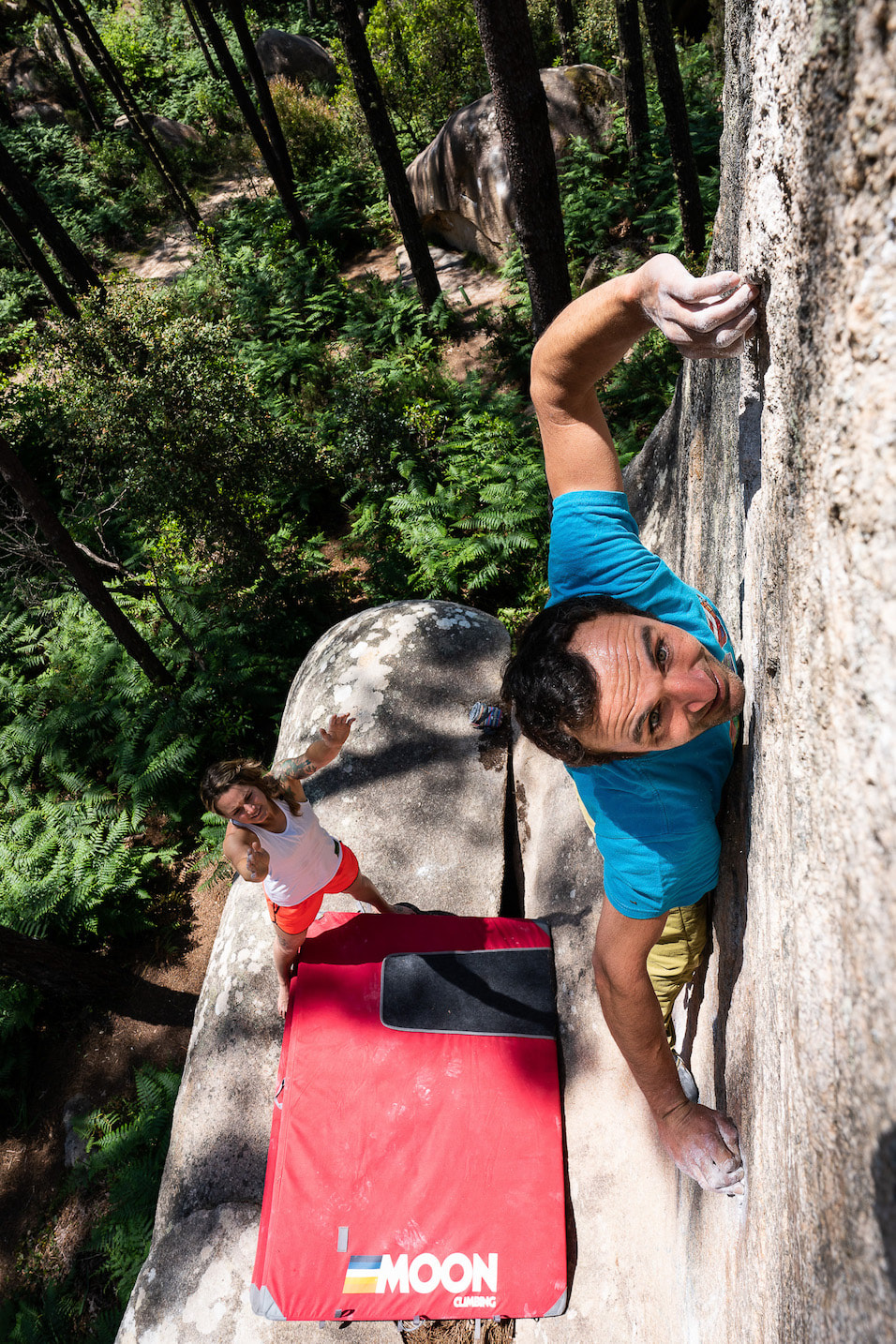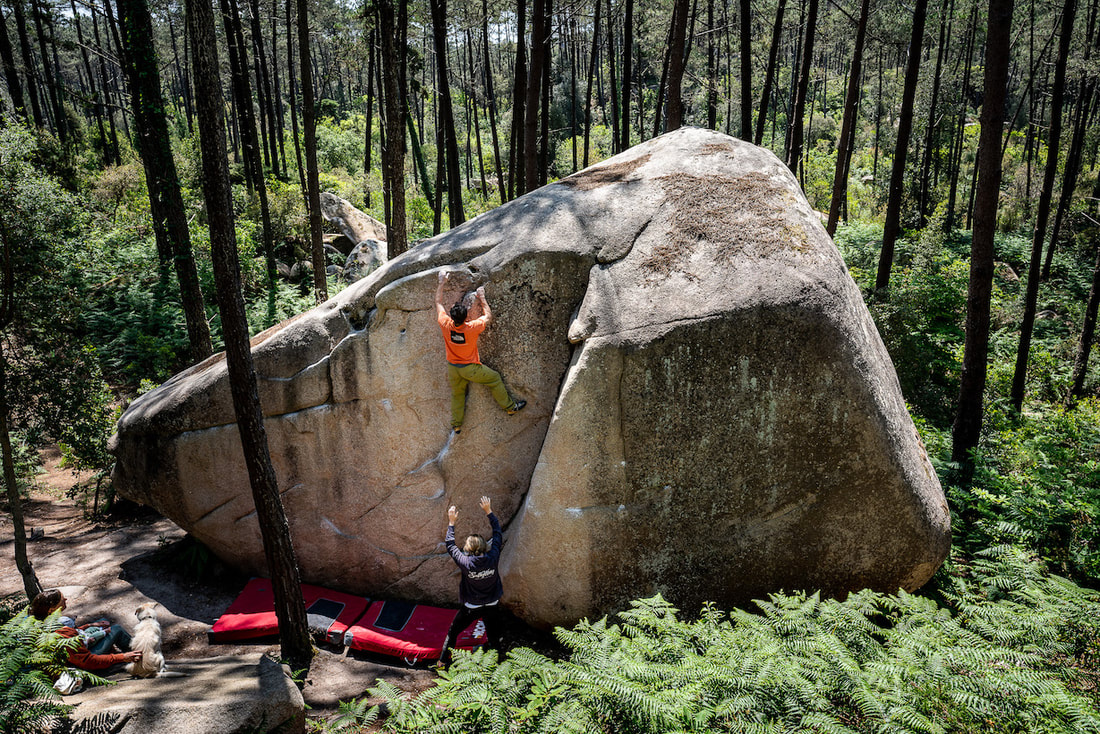There are many reasons to travel to Portugal. It is famous both in the world of sports and for those who love an "easy and fun" lifestyle. There is even more to love if you are a climbing and surfing enthusiast.
The great ocean waves and immense beaches attract the best surfers from all over, this includes the infamous Nazaré, known for some of the largest waves in the world - reaching world-record setting levels of up to 30 meters (100 feet.) Although many climbers surf, we are more drawn to the 30-meter-plus cliff!
Portugal holds many climbing possibilities, from sport crags, to bouldering, and multipitch climbs. And, all of this is in well-preserved, protected, and evocative natural environments, such as the beautiful Sintra Nature Reserve.
The great ocean waves and immense beaches attract the best surfers from all over, this includes the infamous Nazaré, known for some of the largest waves in the world - reaching world-record setting levels of up to 30 meters (100 feet.) Although many climbers surf, we are more drawn to the 30-meter-plus cliff!
Portugal holds many climbing possibilities, from sport crags, to bouldering, and multipitch climbs. And, all of this is in well-preserved, protected, and evocative natural environments, such as the beautiful Sintra Nature Reserve.
|
This area, located just north of Lisbon, concentrates the naturalistic, artistic, and cultural beauties of Portugal. The capital of the area, the town of Sintra, is located on top of the Monte della Luna at almost four hundred meters (1300 feet) above sea level. It is a magical place, with nineteenth-century buildings, fairy-tale villas, and a Moorish castle make. Poets and writers of the past lauded it as the most beautiful place in Portugal; In particular Lord Byron defined it as a glorious Eden.
The Sintra area is quite large, over 300 square kilometers (110 square miles), with a complex and varied morphology. The coast is very indented and offers wide beaches and stretches of cliffs up to 100 meters (320 feet) high. The internal area is hilly with fairly steep slopes cloaked with a dense forest, where some of the rock-climbing jewels of the reserve are hidden. The whole area is characterized by a particular microclimate, mild in the south and cooler and oceanic in the north. In general, however, the whole reserve is cooler than the rest of Portugal thanks to the dense vegetation and the movement of the winds. From a geological perspective, this area offers different types of rock - all excellent for climbing, from bouldering to multipitch (both trad and sport). The main outcrops are granite, such as the high cliffs near Cabo da Roca. Cabo da Roca represents the westernmost point of Europe, a place once defined as the end of the world (before the discovery of the Americas). Here on the cliffs overlooking the sea are beautiful, challenging, and long routes of the sectors of Ponta Atlantica and Espinhaco. There are also huge granite boulders scattered in the woods between the hills in the spots of Capuchos, Penina, and Malveira. |
|
The coast not only offers granite, but also an excellent gray, and sometimes red, limestone near the Cabo da Guia on the cliff of Farol da Guia. Further north, at Casal Pianos, there is basalt - beautiful cliffs with vertical walls, regular shapes, and full of cracks, perfect for trad climbing.
Many sectors offer a good amount of moderate climbs that are well bolted and often with short approaches. In recent years a great deal of titanium bolting work has begun on sea cliffs, thanks to the contribution of the local climbers themselves and some trade associations, thus making those climbing sectors subject to marine oxidation even safer. In the Sintra area I highly recommend the Saltyway surf and climb hostel. It is the ideal place to spend a holiday dedicated to both climbing and relaxation. They have a collaboration with Outdoor Adventures Portugal and Sintra Boulder Shop. Climbing instructors Pierre and Isabel, from Outdoor Adventures Portugal, offer full services including cliff tours, equipment rental, and classes for beginners. Digas and Laura, from SintraBouldershop, specialize in bouldering, offering a tour of local bouldering spots and crashpad rentals. They also have a small shop with everything you need for climbing. Portugal, and the Sintra area in particular, will leave you with wonderful memories and the desire to return. Making a base in Saltyway helps to make the trip even richer. Special thanks to Julika who hosted us and organized the logistics well together with the surf and climbing instructors and Saltyway guests. Greetings to Pierre and Isabella from Outdoor Adventures Portugal and Digas and Laura from Sintra Boulder Shop. Sintra is one of my favorite spots in Portugal, and Saltyway surf and climb hostel is the ideal place to go for your outdoor adventures. Here you will find the best and nicest surf instructors and everything you need for climbing thanks to the collaboration with Outdoor Adventure Portugal and Sintra Boulder Shop . P.S. If you go for a week in Saltyway, ask the guys from the “house” Tina, Paul, and Finn to make the pizzas, a great party will be unleashed and fun is guaranteed. |
Recommended Climbing Spots:
Sport Climbing
- Farol da Guia
Historical sector, perfect postcard of an ocean cliff in Portugal, (lighthouse, cliff, and sea). With approximately 80 routes from IV to 8b on excellent rock and all bolted in Titanium. Farol da Guia is certainly one of the most popular crags in the Sintra area, thanks to the large number of routes and short access. Many areas offer different exposures that make it pleasant both in winter and in summer. Here, in addition to the routes, there are many possibilities for bouldering among the large boulders at the base.
- Pedra Amarela
A small granite outcrop immersed in the woods that offers easy slab climbing. Ideal for beginners and climbing schools. There are about ten routes in all, almost all of which are fairly easy and well bolted.
- Praia da Ursa
Near Cabo da Roca, a long and steep path leads to the splendid Baia da Ursa, a beach with huge seastacks just a few meters from the shore. Behind the beach there are high walls of excellent orange granite. Here are two small sectors; Placa Rosa, a few tens-of-meters from the arrival of the path and just beyond the Cascata sector in a small canyon. At Placa Rosa there are about 20 routes from V to 7a on a beautiful leaning slab but also on an overhanging portion. The Cascata sector, on the other hand, has aided routes on the two sides of the canyon, in all 15 routes from 6a to 7c, more technical and athletic routes in the most protruding portion.
- Penedo de Amizade
Granite fortress near the Moorish Castle of Sintra, about 80 routes from 15 to 60 meters, both single pitch and multipitch, almost all bolted and some trad. On the central panettone there are the longer and easier routes, and for this reason it is appreciated by climbing schools and beginners. There are more difficult routes on the upper walls, just below the castle walls. This area has a magnificent view beyond the ocean coast.
- Farol da Guia
Historical sector, perfect postcard of an ocean cliff in Portugal, (lighthouse, cliff, and sea). With approximately 80 routes from IV to 8b on excellent rock and all bolted in Titanium. Farol da Guia is certainly one of the most popular crags in the Sintra area, thanks to the large number of routes and short access. Many areas offer different exposures that make it pleasant both in winter and in summer. Here, in addition to the routes, there are many possibilities for bouldering among the large boulders at the base.
- Pedra Amarela
A small granite outcrop immersed in the woods that offers easy slab climbing. Ideal for beginners and climbing schools. There are about ten routes in all, almost all of which are fairly easy and well bolted.
- Praia da Ursa
Near Cabo da Roca, a long and steep path leads to the splendid Baia da Ursa, a beach with huge seastacks just a few meters from the shore. Behind the beach there are high walls of excellent orange granite. Here are two small sectors; Placa Rosa, a few tens-of-meters from the arrival of the path and just beyond the Cascata sector in a small canyon. At Placa Rosa there are about 20 routes from V to 7a on a beautiful leaning slab but also on an overhanging portion. The Cascata sector, on the other hand, has aided routes on the two sides of the canyon, in all 15 routes from 6a to 7c, more technical and athletic routes in the most protruding portion.
- Penedo de Amizade
Granite fortress near the Moorish Castle of Sintra, about 80 routes from 15 to 60 meters, both single pitch and multipitch, almost all bolted and some trad. On the central panettone there are the longer and easier routes, and for this reason it is appreciated by climbing schools and beginners. There are more difficult routes on the upper walls, just below the castle walls. This area has a magnificent view beyond the ocean coast.
Multipitch Climbing
In the Sintra area there are three sectors with multipitch climbs. The aforementioned Penedo de Amizade offers routes of 2-3 pitches in a fairly quiet environment. The two sectors near Cabo de Roca, Espinhaço and Ponta Atlântica, are more severe and wild environments. These large walls overlook the ocean, with immense waves crashing on the cliff below. There are about 150 routes in the whole area, mostly all trad with partial bolting (it is necessary to tackle the routes with a full set of nuts and friends). The longest routes here are up to 120 meters (nearly 400 feet), some with difficult pitches up to 8a + and also some projects yet to be freed. This area remains a fairly wild place, where a possible rescue is difficult.
In the Sintra area there are three sectors with multipitch climbs. The aforementioned Penedo de Amizade offers routes of 2-3 pitches in a fairly quiet environment. The two sectors near Cabo de Roca, Espinhaço and Ponta Atlântica, are more severe and wild environments. These large walls overlook the ocean, with immense waves crashing on the cliff below. There are about 150 routes in the whole area, mostly all trad with partial bolting (it is necessary to tackle the routes with a full set of nuts and friends). The longest routes here are up to 120 meters (nearly 400 feet), some with difficult pitches up to 8a + and also some projects yet to be freed. This area remains a fairly wild place, where a possible rescue is difficult.
|
Bouldering
The Eucalyptus forest in the hills around Sintra is strewn with huge granite boulders with three main sectors. - Capuchos One of the most significant sectors is Capuchos (the name derives from the nearby Capuchin Convent). Tall trees provide shade and make the boulders look tiny. There are about 60 moderate problems, along with difficult and very aesthetic blocks. The landings are excellent and the approaches from one boulder to another are easy. This is a very popular spot. - Peninha In this sector, the forest is a bit denser, therefore a bit cooler in summer, but it takes longer to dry after the rains. Here the grades are harder than Capuchos and the routes more athletic and compressed. There are about 60 medium-grade problems. - Malveira Here the granite has a slightly finer grain than the other sectors and with a warmer color, the rocks emerge out of the woods and dry quickly. There are about 50 overhanging and power blocks. |

